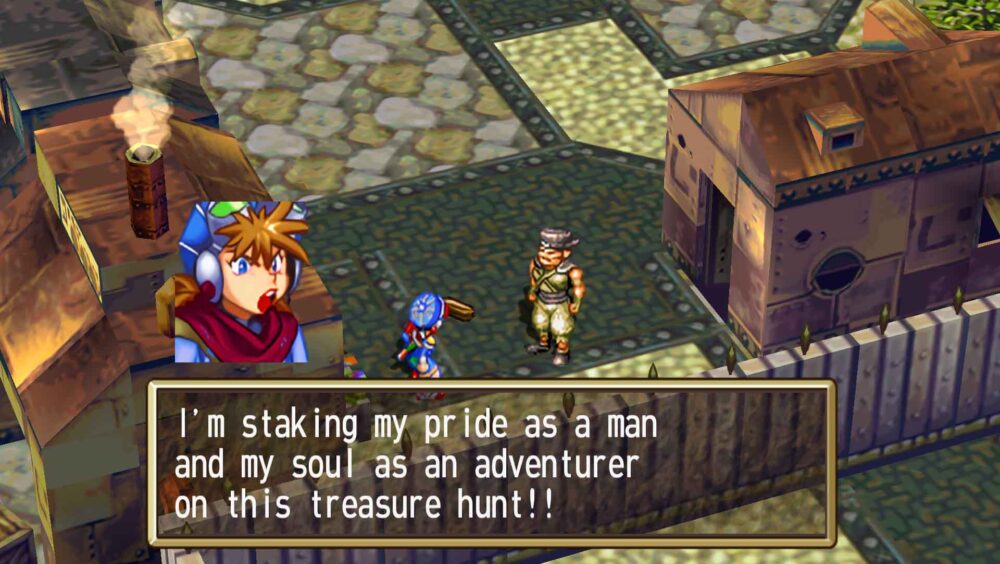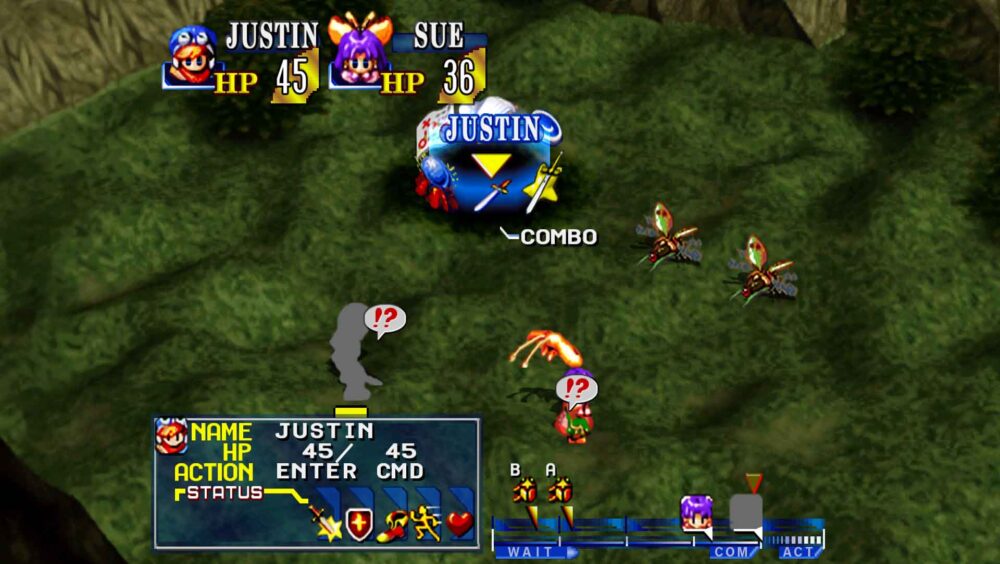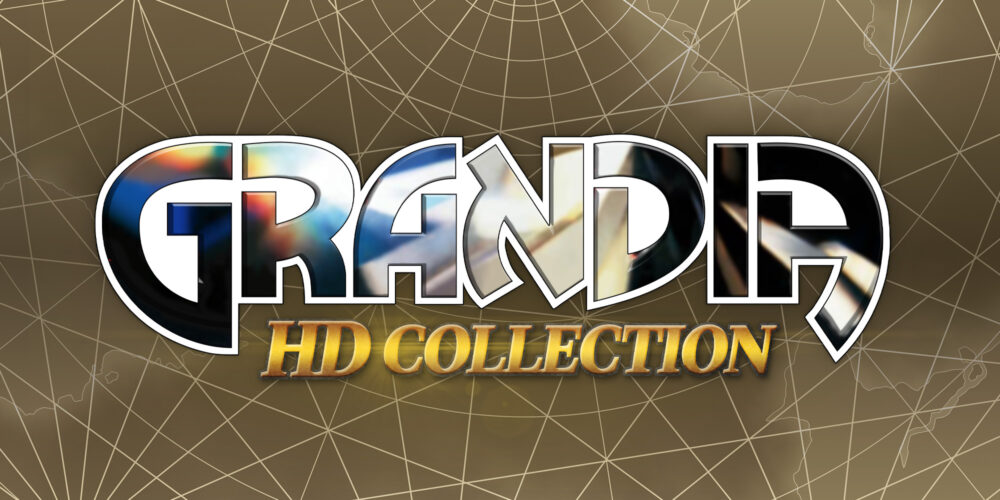It’s time to take an RPG trip back in time, with the Grandia HD Collection, which will not include any silly magic portal nonsense to stop the end of the world, but through the wonders of remastered collections and modern technology to, well, stop the end of the world.
This time we’re taking a look at Game Arts classic Grandia games, specifically the first two numbered games in the series, Grandia and Grandia II, with the Grandia HD Collection. The Grandia HD Collection or, at the very least, the HD versions of each game have already been released on PC and Nintendo Switch. And now they’re hitting last-gen consoles, specifically Xbox One and PS4. Fear not current-gen machine owners, as the Xbox One version is playable on Series machines and, I’d imagine, the PS4 version is playable on PS5’s as well.
The Grandia series began life in 1997 on the Sega Saturn, with a PS1 port in 1999. A year later Grandia 2 debuted on the Sega Dreamcast with a PS2 port coming along in 2002. While the series may have fizzled out in the years since, the games have garnered a large fan following, with Grandia 2 being a particular highlight for this reviewer.

While part of the same series, Grandia 1 and 2 are narratively unconnected and, to a large degree, just as tonally different.
Grandia 1 feels like a Saturday morning adventure cartoon as it follows the journey of a young boy to become a famed adventurer like his father. Cue plenty of shenanigans and a mysterious lost civilization and you have a really charming game that is still fun to play today.
Grandia 2 throws you into the shoes of hardened Geohound, Ryudo, a mercenary monster hunter. A job to protect a Songstress turns into a race to stop the god of darkness from returning. While the first game was a fun, sunny adventure, Grandia 2’s tone is much darker and snarkier. That’s not to say it isn’t without its fair share of humour, but it certainly takes a deeper dive into darkness than its forbearer. It’s also an exceptional JRPG in its own right that is just as fantastically addictive now as it was when I played it back in 2000.
Grandia HD Collection’s strongest features are its excellent writing and its, at the time, unique take on the Active Time Battle (ATB) system. Both games feature great characters and character progression, though Ryudo steals the show with his acidic remarks to all and sundry in the second. The overall story itself for both games might not be unique but the excellent dialogue is truly a highlight.

While both games are traditional JRPGs through and through, the ATB system used was designed to make sure you paid attention to what was going on during combat. What set the ATB system apart was that, with special attacks, you could delay an enemy’s attack. Additionally, if you timed activating your attack to the same time as the enemy, you could counter them, push their timing back on the bar and deal damage at the same time.
Conversely, the enemy could do the same to you but if timed correctly, you can get through a fight without taking any damage, essentially creating combos between your characters. While there is an option to customise the character’s strategy in combat, doing everything manually yields the best results. Interestingly, Grandia 1 also has a weapon level-up system. I’m not entirely sure how much levelling a weapon up through use actually makes to your damage stats though.
The games also sport no random encounters. You can see enemies roaming the map and it’s as simple as running into them to begin combat. Clearing an area stays devoid of enemies until you leave that area and return. As with most JRPGs from this time, grinding plays an important part in success, along with opening up new skills. Power levellers will find themselves in heaven here as you can grind your way to victory.

The Grandia HD Collection, however, reminds me of the early PS3 days of HD collections, when the games received a minimum amount of work amounting to high resolution widescreen support, higher resolution textures and other basic asset work. The Grandia HD Collection is no different in this regard. Beyond the aforementioned higher resolution textures and HD ratio support, the games remain almost exactly the same as they were on launch, just playable on modern hardware.
Now while I don’t need the quality of life changes, such as saving anywhere or rewinds, that so many retro collections now encapsulate, I would have liked the Grandia HD Collection to have received some more work on the texture front. Grandia 1, for instance, utilises sprite-based characters which seem to have gone through a smoothing filter rather than been redrawn, which makes the characters look a little smeary at times, while Grandia 2, fully 3D, has some world textures that also look as though they’ve been Photoshop filtered and smoothed out.
Is this game breaking in any way? Far from it, the games play exactly as they did on launch which, for many of us, is exactly what we’re looking for. For all intents and purposes, they’re basically straight ports of classic games. They’re also the best way to play them today, short of pulling out your original copies and hardware and booting them up. Assuming you still have both the machines and discs and they’re in working order.

Does the Grandia HD Collection do what it sets out to do and bring these classics to modern hardware and audiences? Yes, it certainly does. Grandia 1’s rough polygonal visuals fade into the ether with a little bit of playtime as the fun gameplay takes over. And the same goes for Grandia 2, even though its 3D visuals fare better than the first games. Nearly from the get go I was absorbed back into both games with their stellar writing and fun gameplay.
You may have to temper your expectations on what you expect from The Grandia HD Collection visually. But if you can look past the aging visuals, you’ll find two fantastic JRPG’s that deserve to be played.
Grandia HD Collection Trailer
Read more of our reviews here https://invisioncommunity.co.uk/category/review/








You must be logged in to post a comment.